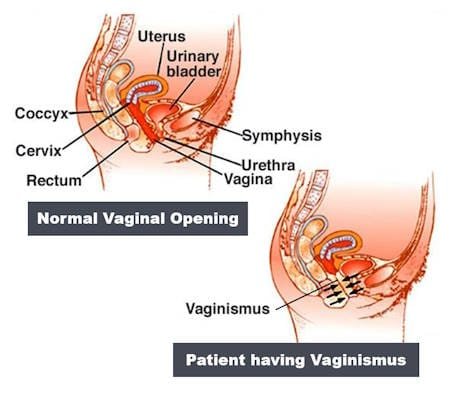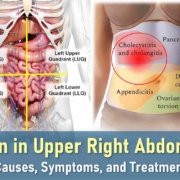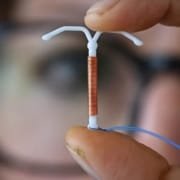Vaginismus: Symptoms, Causes, and Treatment
Vaginismus is a condition that involves the involuntary tightening of the muscles around the vagina, which can make sexual intercourse, pelvic examinations, and tampon insertion painful or even impossible. This condition falls under the broader category of Genito-Pelvic Pain/Penetration Disorder (GPPPD). While it can significantly affect a woman’s sexual health and overall well-being, vaginismus is a treatable condition with proper intervention. Understanding its symptoms, causes, and treatment options is critical for those affected and healthcare providers.
What is Vaginismus?
Vaginismus is the involuntary contraction of the muscles surrounding the vaginal opening, particularly the pelvic floor muscles like the levator ani. These contractions occur when penetration is attempted or even anticipated, leading to pain or an inability to engage in sexual intercourse, insert tampons, or undergo gynecological exams.
The term vaginismus is now often referred to as Levator Ani Syndrome, as the disorder largely stems from pelvic muscle dysfunction. This condition can be primary (present from the first sexual experience) or secondary (developing after a period of pain-free sexual activity). The severity can range from mild discomfort to severe pain that makes vaginal penetration impossible.
How Common is Vaginismus?
Though precise statistics vary, it’s estimated that vaginismus affects anywhere from 1-6% of women at some point in their lives. The condition may be underreported, as many women feel reluctant to discuss sexual pain with healthcare providers due to embarrassment or cultural factors. Moreover, vaginismus may coexist with other sexual dysfunctions like difficulty in arousal or reaching orgasm, further complicating its diagnosis.

Vaginismus Symptoms
The key symptom of vaginismus is pain with vaginal penetration, whether from sexual intercourse, tampon use, or pelvic exams. The pain is often described as burning, stabbing, or cramping. Involuntary muscle tightness can occur when penetration is anticipated or attempted, leading to discomfort and distress. Other symptoms may include:
- Intense anxiety about pain during intercourse
- Fear of penetration
- Avoidance of sexual activity or pelvic exams
- Inability to achieve vaginal penetration despite relaxation efforts
- Difficulty with arousal or orgasm, particularly due to fear or anxiety
Women may also experience emotional stress and strain in relationships, especially if vaginismus affects their ability to conceive.
What Causes Vaginismus
The causes of vaginismus can be multifactorial, involving both physical and psychological components. Common causes include:
- Previous Trauma: A history of sexual abuse, assault, or a painful first sexual experience can lead to vaginismus. Even non-sexual trauma like childbirth or pelvic surgery may trigger the condition.
- Fear of Pain: Many women develop vaginismus due to the fear that penetration will be painful. This fear can cause the pelvic muscles to tighten involuntarily, creating a cycle of pain and anxiety.
- Psychological Factors: Anxiety, stress, relationship problems, or a history of negative sexual experiences can contribute to the development of vaginismus.
- Medical Conditions: Conditions such as endometriosis, pelvic inflammatory disease (PID), infections like yeast infections or genital herpes, or scarring from surgery can cause pelvic pain and exacerbate vaginismus.
- Hormonal Changes: Post-menopausal women may develop vaginismus due to decreased estrogen levels, which lead to vaginal dryness, thinning, and loss of elasticity.
Diagnosis of Vaginismus
Diagnosing vaginismus involves a thorough medical and psychological evaluation by a healthcare provider, typically a gynecologist or sexual health specialist. The diagnosis process often includes:
- Medical History Review: The doctor will ask about the patient’s sexual history, past trauma, relationship dynamics, and any previous experiences with pain during penetration or pelvic exams.
- Physical Examination: A gentle pelvic exam may be conducted to rule out any underlying physical conditions, such as infections, skin conditions, or structural abnormalities. If the pelvic muscles involuntarily contract during the exam, it may indicate vaginismus.
- Symptom Assessment: The doctor will inquire about the nature and severity of the symptoms, including the specific instances when pain or discomfort occurs (e.g., during intercourse, tampon insertion, or pelvic exams).
- Psychological Evaluation: Since anxiety, fear of penetration, or past trauma can contribute to vaginismus, a mental health professional may be involved to assess emotional or psychological factors affecting the condition.
Vaginismus Treatment
The treatment of vaginismus usually involves a combination of approaches, depending on the underlying causes. A multidisciplinary team, including gynecologists, physical therapists, psychotherapists, and sex therapists, may be involved.
1. Pelvic Floor Physical Therapy
Pelvic floor physical therapy is one of the most effective treatments for vaginismus. It helps women learn to control and relax their pelvic floor muscles. Techniques include:
- Biofeedback: This helps women gain awareness and control over pelvic muscles by using sensors to monitor muscle activity.
- Trigger-Point Therapy: Applying pressure to tight spots in the muscles helps alleviate tension.
- Electrical Stimulation: Gentle electrical currents applied to the pelvic area help relax the muscles.
2. Psychotherapy and Counseling
Cognitive-behavioral therapy (CBT) or sex therapy can help address the psychological factors contributing to vaginismus. Mindfulness techniques are often used to manage anxiety and fear of pain during intercourse.
3. Progressive Desensitization
This technique involves the gradual introduction of vaginal dilators of increasing sizes to help women become comfortable with penetration. Over time, this helps women tolerate larger objects, eventually progressing to sexual intercourse.
4. Medication
For women experiencing vaginal dryness or thinning due to menopause, low-dose vaginal estrogen or DHEA suppositories can help restore lubrication and elasticity. If infections or inflammatory conditions are contributing, antibiotics or antifungal treatments may be necessary.
5. Lubricants and Anesthetic Gels
Lubricants (preferably water-based or silicone-based) can help reduce discomfort during intercourse. In some cases, numbing gels may be prescribed to reduce pain in the vaginal area during penetration.
Vaginismus Exercises
Pelvic floor exercises, commonly known as Kegel exercises, can be useful in treating vaginismus. These exercises help strengthen and relax the pelvic floor muscles, making them easier to control during intercourse. Some specific exercises include:
- Kegels: Tightening and releasing the pelvic floor muscles can help improve muscle tone and control.
- Progressive Relaxation: Focus on relaxing each muscle group, especially the pelvic floor, to reduce overall tension in the body.
In conjunction with physical therapy, these exercises can be practiced at home to improve vaginal comfort and reduce pain during penetration.
How to Treat Vaginismus at Home
Treating vaginismus at home often involves self-care practices like:
- Use of Vaginal Dilators: These are plastic or silicone devices of varying sizes used to gradually stretch the vaginal opening and reduce fear and anxiety about penetration.
- Lubrication: Regular use of vaginal lubricants can help reduce discomfort during sexual activity.
- Relaxation Techniques: Mindfulness, meditation, or deep breathing exercises can help reduce anxiety and relax the pelvic muscles.
It is important to consult with a healthcare provider before starting any home treatments to ensure they are appropriate for your condition.
How Long Does It Take to Cure Vaginismus?
The length of time to cure vaginismus varies depending on the severity of the condition and the individual’s response to treatment. In mild cases, significant improvement can occur within weeks or months with consistent treatment, including pelvic floor therapy, counseling, and home exercises. For others, treatment may take longer, especially if psychological factors like anxiety or past trauma are involved.
Frequently Asked Questions (FAQs)
1. How do I know if I have vaginismus?
If you experience pain, discomfort, or tightness during intercourse, tampon insertion, or pelvic exams, and these symptoms have persisted for six months or more, you may have vaginismus. Consulting a healthcare provider is crucial for an accurate diagnosis.
2. What does vaginismus feel like?
Vaginismus is often described as a burning, stinging, or cramping sensation during vaginal penetration. Some women may feel as though their vagina is “closed” or too tight to allow penetration.
3. Can vaginismus go away on its own?
Vaginismus is unlikely to resolve without treatment. It is important to seek help from healthcare providers who specialize in pelvic floor conditions to receive appropriate treatment.
4. What causes vaginismus?
Vaginismus can be caused by a combination of factors, including fear of pain, past sexual trauma, medical conditions, or anxiety about intercourse.
5. Is vaginismus permanent?
Vaginismus is treatable, and many women fully recover with proper care. The treatment involves both physical and psychological approaches to address muscle tightness and any underlying emotional factors.
Conclusion
Vaginismus is a complex but treatable condition that affects a woman’s ability to engage in pain-free vaginal penetration. Early diagnosis and intervention through a combination of physical therapy, psychotherapy, and home exercises can significantly improve symptoms. If you suspect that you may have vaginismus, seeking help from a healthcare professional can pave the way toward recovery and a more fulfilling sexual life.










